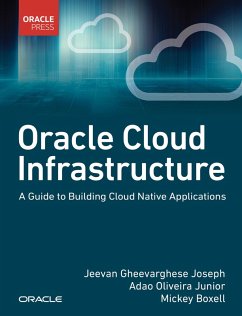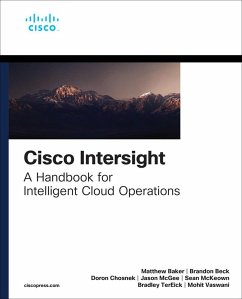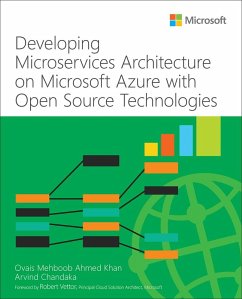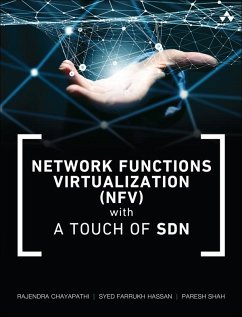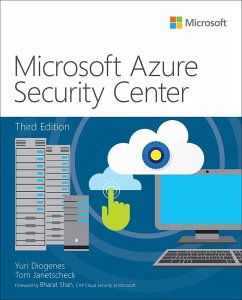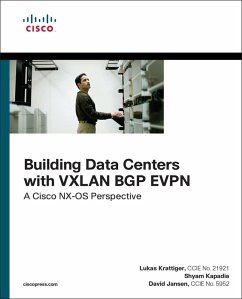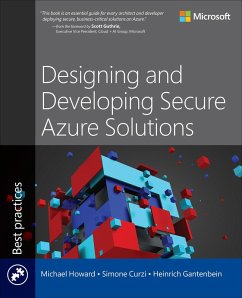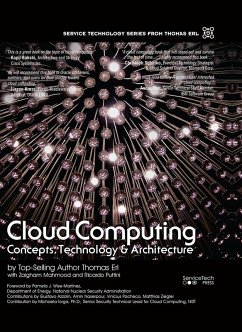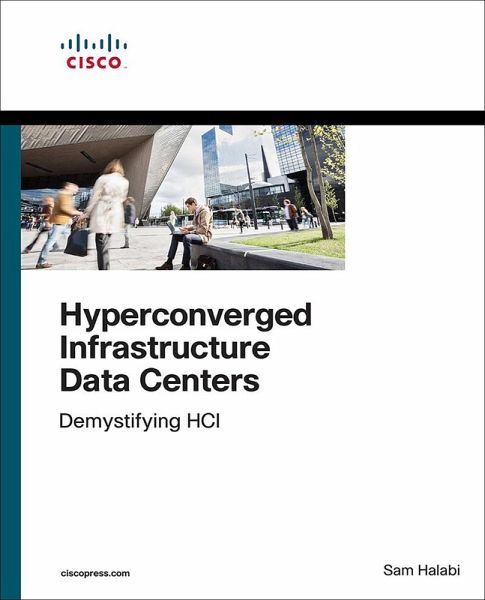
Hyperconverged Infrastructure Data Centers (eBook, ePUB)
Demystifying HCI
Versandkostenfrei!
Sofort per Download lieferbar
33,95 €
inkl. MwSt.
Weitere Ausgaben:

PAYBACK Punkte
17 °P sammeln!
Improve Manageability, Flexibility, Scalability, and Control with Hyperconverged Infrastructure Hyperconverged infrastructure (HCI) combines storage, compute, and networking in one unified system, managed locally or from the cloud. With HCI, you can leverage the cloud's simplicity, flexibility, and scalability without losing control or compromising your ability to scale. In Hyperconverged Infrastructure Data Centers, best-selling author Sam Halabi demystifies HCI technology, outlines its use cases, and compares solutions from a vendor-neutral perspective. He guides you through evaluation...
Improve Manageability, Flexibility, Scalability, and Control with Hyperconverged Infrastructure
In Hyperconverged Infrastructure Data Centers, best-selling author Sam Halabi demystifies HCI technology, outlines its use cases, and compares solutions from a vendor-neutral perspective. He guides you through evaluation, planning, implementation, and management, helping you decide where HCI makes sense, and how to migrate legacy data centers without disrupting production systems.
The author brings together all the HCI knowledge technical professionals and IT managers need, whether their background is in storage, compute, virtualization, switching/routing, automation, or public cloud platforms. He explores leading solutions including the Cisco HyperFlex platform, VMware vSAN, Nutanix Enterprise Cloud, Cisco Application-Centric Infrastructure (ACI), VMware's NSX, the open source OpenStack and Open vSwitch (OVS) / Open Virtual Network (OVN), and Cisco CloudCenter for multicloud management.
As you explore discussions of automation, policy management, and other key HCI capabilities, you'll discover powerful new opportunities to improve control, security, agility, and performance.
This book is part of the Networking Technology Series from Cisco Press, which offers networking professionals valuable information for constructing efficient networks, understanding new technologies, and building successful careers.
Hyperconverged infrastructure (HCI) combines storage, compute, and networking in one unified system, managed locally or from the cloud. With HCI, you can leverage the cloud's simplicity, flexibility, and scalability without losing control or compromising your ability to scale.
In Hyperconverged Infrastructure Data Centers, best-selling author Sam Halabi demystifies HCI technology, outlines its use cases, and compares solutions from a vendor-neutral perspective. He guides you through evaluation, planning, implementation, and management, helping you decide where HCI makes sense, and how to migrate legacy data centers without disrupting production systems.
The author brings together all the HCI knowledge technical professionals and IT managers need, whether their background is in storage, compute, virtualization, switching/routing, automation, or public cloud platforms. He explores leading solutions including the Cisco HyperFlex platform, VMware vSAN, Nutanix Enterprise Cloud, Cisco Application-Centric Infrastructure (ACI), VMware's NSX, the open source OpenStack and Open vSwitch (OVS) / Open Virtual Network (OVN), and Cisco CloudCenter for multicloud management.
As you explore discussions of automation, policy management, and other key HCI capabilities, you'll discover powerful new opportunities to improve control, security, agility, and performance.
- Understand and overcome key limits of traditional data center designs
- Discover improvements made possible by advances in compute, bus interconnect, virtualization, and software-defined storage
- Simplify rollouts, management, and integration with converged infrastructure (CI) based on the Cisco Unified Computing System (UCS)
- Explore HCI functionality, advanced capabilities, and benefits
- Evaluate key HCI applications, including DevOps, virtual desktops, ROBO, edge computing, Tier 1 enterprise applications, backup, and disaster recovery
- Simplify application deployment and policy setting by implementing a new model for provisioning, deployment, and management
- Plan, integrate, deploy, provision, manage, and optimize the Cisco HyperFlex hyperconverged infrastructure platform
- Assess alternatives such as VMware vSAN, Nutanix, open source OpenStack, and OVS/OVN, and compare architectural differences with HyperFlex
- Compare Cisco ACI (Application- Centric Infrastructure) and VMware NSX approaches to network automation, policies, and security
This book is part of the Networking Technology Series from Cisco Press, which offers networking professionals valuable information for constructing efficient networks, understanding new technologies, and building successful careers.
Dieser Download kann aus rechtlichen Gründen nur mit Rechnungsadresse in A, B, BG, CY, CZ, D, DK, EW, E, FIN, F, GR, HR, H, IRL, I, LT, L, LR, M, NL, PL, P, R, S, SLO, SK ausgeliefert werden.




